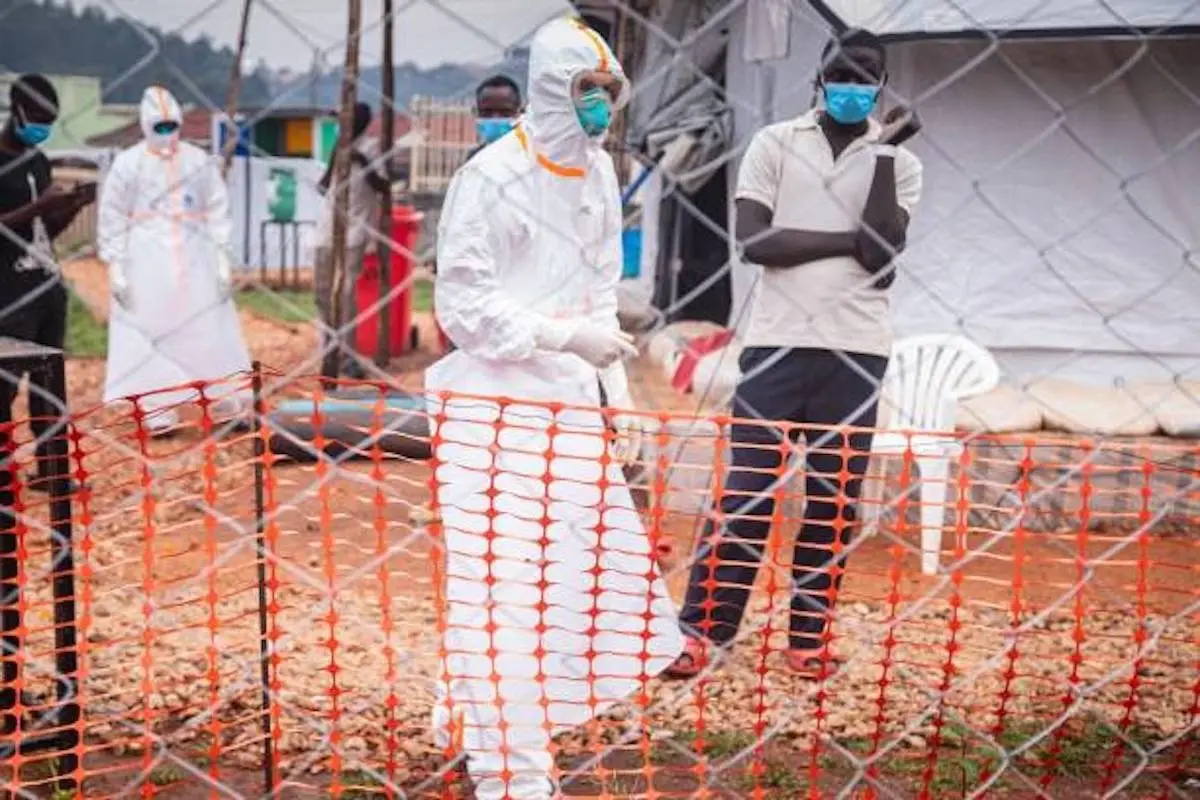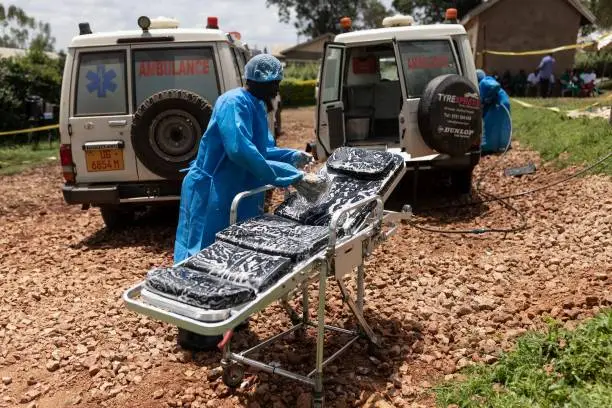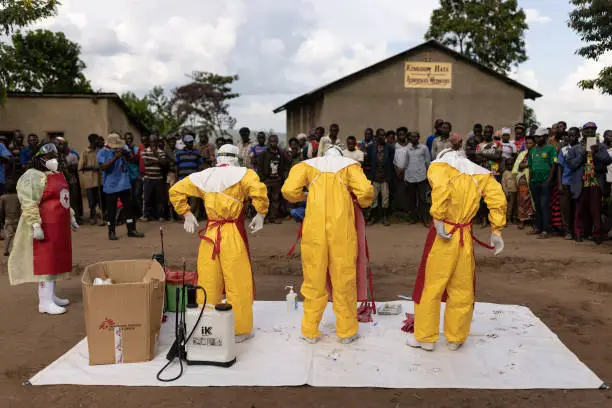
Photo by BADRU KATUMBA/AFP via Getty Images
Since 2000, the World Health Organization has reported 32 outbreaks of Ebola and the latest outbreak of Uganda reported on September 20 is the latest eruptions of this deadly disease in Africa. Global health officials have linked Climate change to this large increase in Ebola outbreaks in Africa.
What is Ebola? what is its connection with climate change?
Ebola is a relatively rare but severe infectious disease mainly found in Africa. It is thought to be transmitted to humans by animals including fruit bats, primates, and porcupines. Transmission between people can then happen through direct contact with the blood or bodily fluids of an infected person. The virus attacks the immune system, with typical symptoms including fever, muscle pain, vomiting, diarrhea, rash, and internal and external bleeding. Roughly half of all cases are fatal; of the forty-six known cases in 2021, there were twenty-seven deaths.
Many effects of climate change are expected to provide better conditions for the animals that carry the disease. For example, a warmer and wetter climate in the forests of the Democratic Republic of Congo (DRC) could yield more vegetation to feed more host animals. That creates more opportunities for the virus to jump to humans. Previous outbreaks of Ebola have coincided with shifts from dry seasons to periods of heavy rainfall.

A WHO analysis reveals that Ebola virus and other viral hemorrhagic fevers account for close to 70% of these outbreaks. The remaining 30% comprises dengue fever, anthrax, plague, and monkeypox.
According to Patrick Otim, WHO Africa’s incident manager for the Ebola epidemic in Uganda, more than 63% more zoonotic illnesses have been reported in the region during the past ten years.Researchers have suggested a potential connection between the climate changes we are witnessing and the rise of zoonotic illnesses, such as this specific incidence of Ebola, he added.
Otim claimed that a number of things can lead to sickness. He claimed that the human factor has a significant impact on Ebola. Interaction with animals grows as populations rise and humans encroach on wildlife habitats. According to him, this accelerates the spread of sickness to people. According to Otim, climate and temperature variations also encourage some Ebola virus hosts to roam around and migrate.

He remarked, “We know that the Ebola virus is exclusive to bats and other animals as hosts. Therefore, they may move into an area where the human population is living and the interaction between the humans rises when they move into favourable locations from areas where, for example, there is drought or whether areas that are no longer conducive for them.
WHO reports that seven districts in Uganda have been affected by Ebola, which has now expanded beyond the original site in Mubende. According to the most recent report, there have been 131 instances, including 48 fatalities. The so-called Sudanese strain, against which there is no vaccination, is what is causing the current Ebola outbreak in Uganda. According to the WHO, several promising vaccine candidates will shortly begin clinical testing to assess how effective they would be against the Ebola virus.

